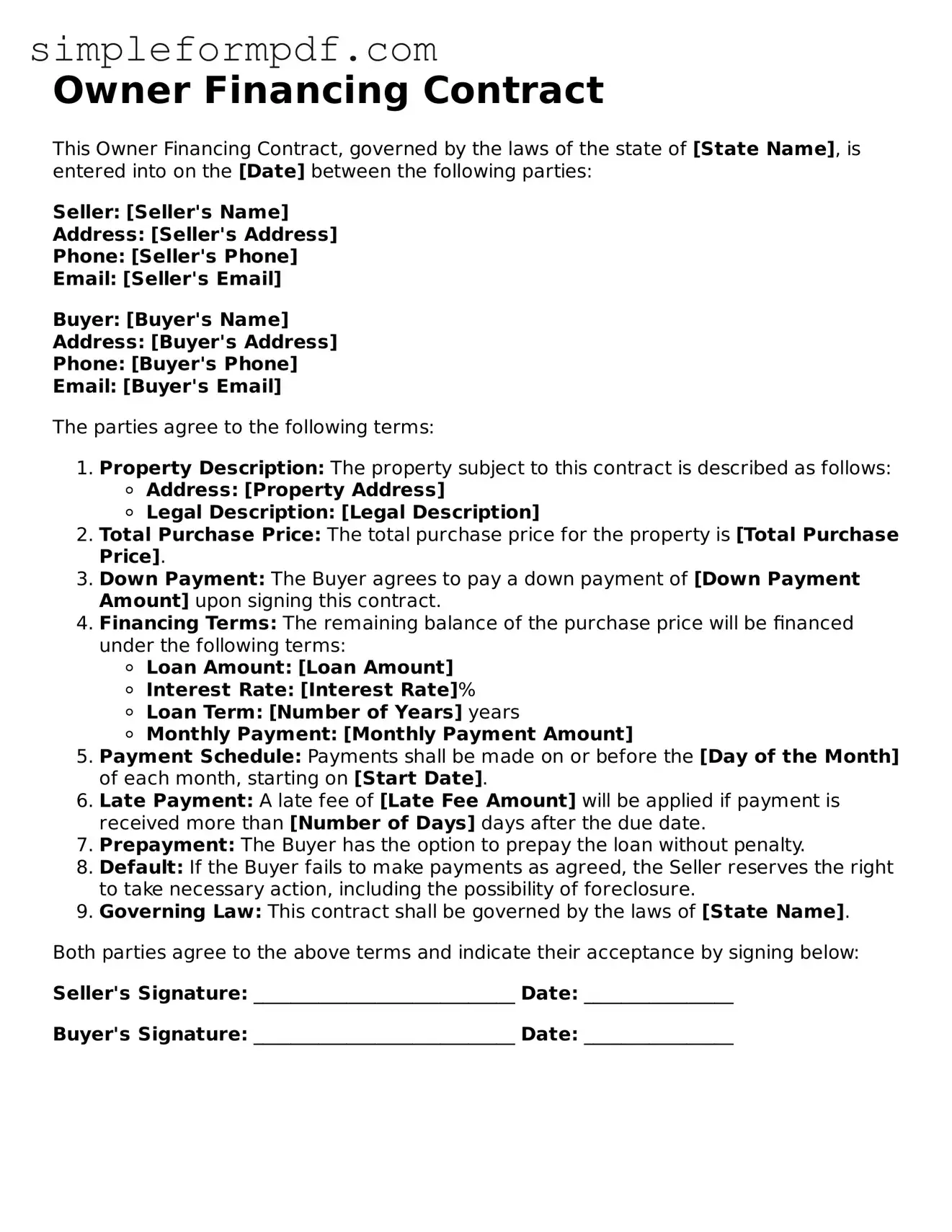Owner Financing Contract
This Owner Financing Contract, governed by the laws of the state of [State Name], is entered into on the [Date] between the following parties:
Seller: [Seller's Name]
Address: [Seller's Address]
Phone: [Seller's Phone]
Email: [Seller's Email]
Buyer: [Buyer's Name]
Address: [Buyer's Address]
Phone: [Buyer's Phone]
Email: [Buyer's Email]
The parties agree to the following terms:
- Property Description: The property subject to this contract is described as follows:
- Address: [Property Address]
- Legal Description: [Legal Description]
- Total Purchase Price: The total purchase price for the property is [Total Purchase Price].
- Down Payment: The Buyer agrees to pay a down payment of [Down Payment Amount] upon signing this contract.
- Financing Terms: The remaining balance of the purchase price will be financed under the following terms:
- Loan Amount: [Loan Amount]
- Interest Rate: [Interest Rate]%
- Loan Term: [Number of Years] years
- Monthly Payment: [Monthly Payment Amount]
- Payment Schedule: Payments shall be made on or before the [Day of the Month] of each month, starting on [Start Date].
- Late Payment: A late fee of [Late Fee Amount] will be applied if payment is received more than [Number of Days] days after the due date.
- Prepayment: The Buyer has the option to prepay the loan without penalty.
- Default: If the Buyer fails to make payments as agreed, the Seller reserves the right to take necessary action, including the possibility of foreclosure.
- Governing Law: This contract shall be governed by the laws of [State Name].
Both parties agree to the above terms and indicate their acceptance by signing below:
Seller's Signature: ____________________________ Date: ________________
Buyer's Signature: ____________________________ Date: ________________
